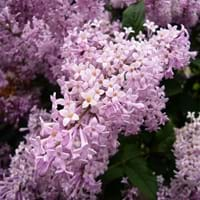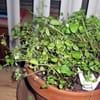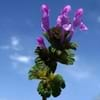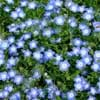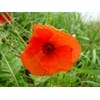Life Span
Annual and Perennial
Perennial
Type
Herbaceous Perennial, Herbs
Flowering Plants, Shrubs
Origin
Europe, Middle East
Europe, Northern America
Types
Mentha × piperita 'Candymint', Mentha × piperita 'Citrata', Mentha × piperita 'Crispa'
Persian lilac, Dwarf Korean lilac, Tree lilacs, Chinese lilac, Himalayan lilac
Number of Varieties
Not Available
Habitat
Wide range of ecological site
Roadsides, Rocky areas, Thickets
USDA Hardiness Zone
3-7
3-7
AHS Heat Zone
Not Available
8-1
Sunset Zone
Not Available
A1, A2, A3, 1a, 1b, 2a, 2b, 3a, 3b, 4, 5, 6, 7, 8, 9, 10, 11, 14
Habit
Clump-Forming
Upright/Erect
Flower Color
Purple
Blue, Pink, Purple, Red, White, Yellow
Flower Color Modifier
Bicolor
Not Available
Fruit Color
Non Fruiting Plant
Brown
Leaf Color in Spring
Dark Green
Dark Green
Leaf Color in Summer
Green, Dark Green
Green
Leaf Color in Fall
Dark Green, Green
Green, Lemon yellow, Sandy Brown
Leaf Color in Winter
Light Green
Not Available
Leaf Shape
Ovate elongated
Heart-shaped
Plant Season
Spring, Summer
Spring
Sunlight
Full Sun, Partial Sun
Full Sun, Partial shade
Type of Soil
Loam
Loamy, Sandy
The pH of Soil
Neutral, Slightly Acidic, Slightly Alkaline
Acidic, Alkaline, Neutral
Soil Drainage
Well drained
Well drained
Bloom Time
Late Summer, Mid Summer
Spring
Tolerances
Drought
Not Available
Where to Plant?
Container, Ground
Ground, Pot
How to Plant?
From Rhizomes, Vegetative Reproduction
Grafting, Seedlings, Stem Planting, Transplanting
Plant Maintenance
Low
Medium
Watering Requirements
Requires plenty of water during the growing season
Keep the ground moist but not water-logged, Over-watering can cause leaf problems or root diseases, Prefer drip-irrigation instead of Over-head watering, Requires a lot of watering, Water twice a day in the initial period, Water when soil is dry
In Summer
Lots of watering
Lots of watering
In Spring
Moderate
Moderate
In Winter
Less Watering
Average Water
Soil pH
Neutral, Slightly Acidic, Slightly Alkaline
Acidic, Alkaline, Neutral
Soil Type
Loamy
Loamy, Sandy
Soil Drainage Capacity
Well drained
Well drained
Sun Exposure
Partial Sun
Full Sun, Partial shade
Pruning
Remove damaged leaves, Remove dead branches, Remove dead leaves, Requires very little pruning
Prune after flowering, Prune prior to new growth, Remove dead leaves, Remove dead or diseased plant parts
Fertilizers
All-Purpose Liquid Fertilizer
All-Purpose Liquid Fertilizer
Pests and Diseases
Red blotch
Powdery mildew, Slugs, Snails
Plant Tolerance
Drought
Drought
Flower Petal Number
Double
Double
Fragrant Bark/Stem
Yes
No
Foliage Texture
Coarse
Medium
Foliage Sheen
Matte
Matte
Attracts
Bees
Butterflies, Hummingbirds
Allergy
flushing of face, Headache, Heartburn, Sore Throat
Eye irritation, Itchy eyes, Runny nose
Aesthetic Uses
Not Used For Aesthetic Purpose
Beautification, Bouquets, Showy Purposes, Used for decorating walls, fences, gates, hedges, etc.
Beauty Benefits
Maintains teeth healthy
Not Available
Environmental Uses
Prevent Soil Erosion
Air purification
Medicinal Uses
Mouth Sores, Pain killer, Vitamin A
Fever, Treat Parasitic Intestinal Worms
Part of Plant Used
Flowers, Leaves
Flowers
Other Uses
In toothpaste, Mouth freshner, Used in flavouring curries, teas, used in Indian cuisine in curries
Air freshner, Oil is used for aromatherapy, Oil is used in perfume, soaps, creams, etc., Used As Food, Used as Ornamental plant, Used for fragrance
Used As Indoor Plant
Yes
Yes
Used As Outdoor Plant
Yes
Yes
Garden Design
Herb
Cutflower, Edging, Mixed Border, Topiary / Bonsai / Espalier
Botanical Name
Mentha × piperita
Syringa
Common Name
Peppermint
Lilac
In German
Pfefferminze
Flieder
In French
Menthe poivrée
lilas
In Spanish
Mentha × piperita
lila
In Portuguese
Hortelã-pimenta
lilás
In Polish
Mięta pieprzowa
liliowy
In Latin
Peppermint
lilac
Phylum
Magnoliophyta
Magnoliophyta
Class
Magnoliopsida
Magnoliopsida
Family
Lamiaceae
Oleaceae
Clade
Angiosperms, Asterids, Eudicots
Angiosperms, Asterids, Eudicots
Subfamily
Not Available
Not Available
Season and Care of Peppermint and Lilacs
Season and care of Peppermint and Lilacs is important to know. While considering everything about Peppermint and Lilacs Care, growing season is an essential factor. Peppermint season is Spring and Summer and Lilacs season is Spring and Summer. The type of soil for Peppermint is Loam and for Lilacs is Loamy, Sandy while the PH of soil for Peppermint is Neutral, Slightly Acidic, Slightly Alkaline and for Lilacs is Acidic, Alkaline, Neutral.
Peppermint and Lilacs Physical Information
Peppermint and Lilacs physical information is very important for comparison. Peppermint height is 60.00 cm and width 50.00 cm whereas Lilacs height is 10.00 cm and width 9.00 cm. The color specification of Peppermint and Lilacs are as follows:
Peppermint flower color: Purple
Peppermint leaf color: Dark Green
Lilacs flower color: Blue, Pink, Purple, Red, White and Yellow
- Lilacs leaf color: Dark Green
Care of Peppermint and Lilacs
Care of Peppermint and Lilacs include pruning, fertilizers, watering etc. Peppermint pruning is done Remove damaged leaves, Remove dead branches, Remove dead leaves and Requires very little pruning and Lilacs pruning is done Prune after flowering, Prune prior to new growth, Remove dead leaves and Remove dead or diseased plant parts. In summer Peppermint needs Lots of watering and in winter, it needs Less Watering. Whereas, in summer Lilacs needs Lots of watering and in winter, it needs Average Water.

